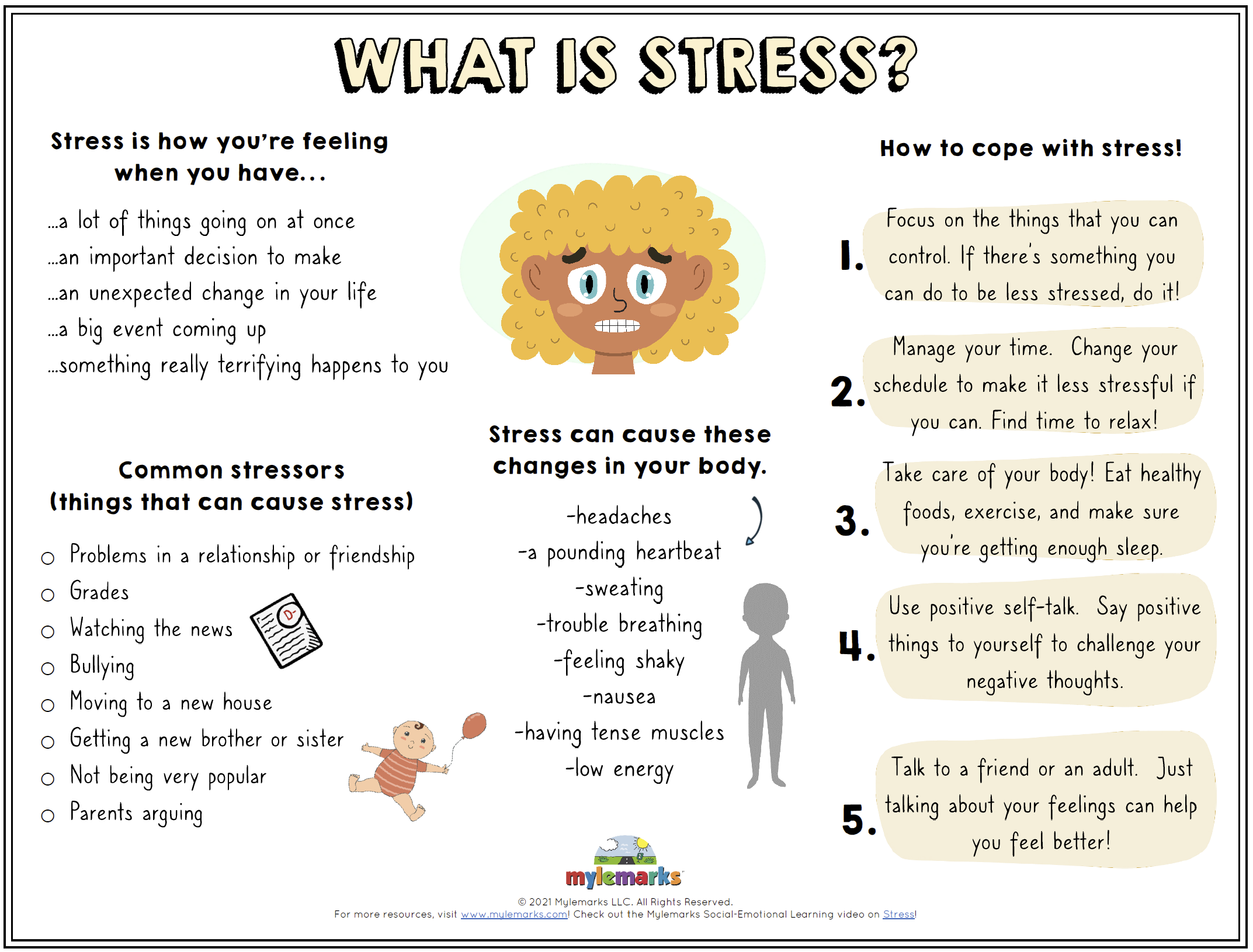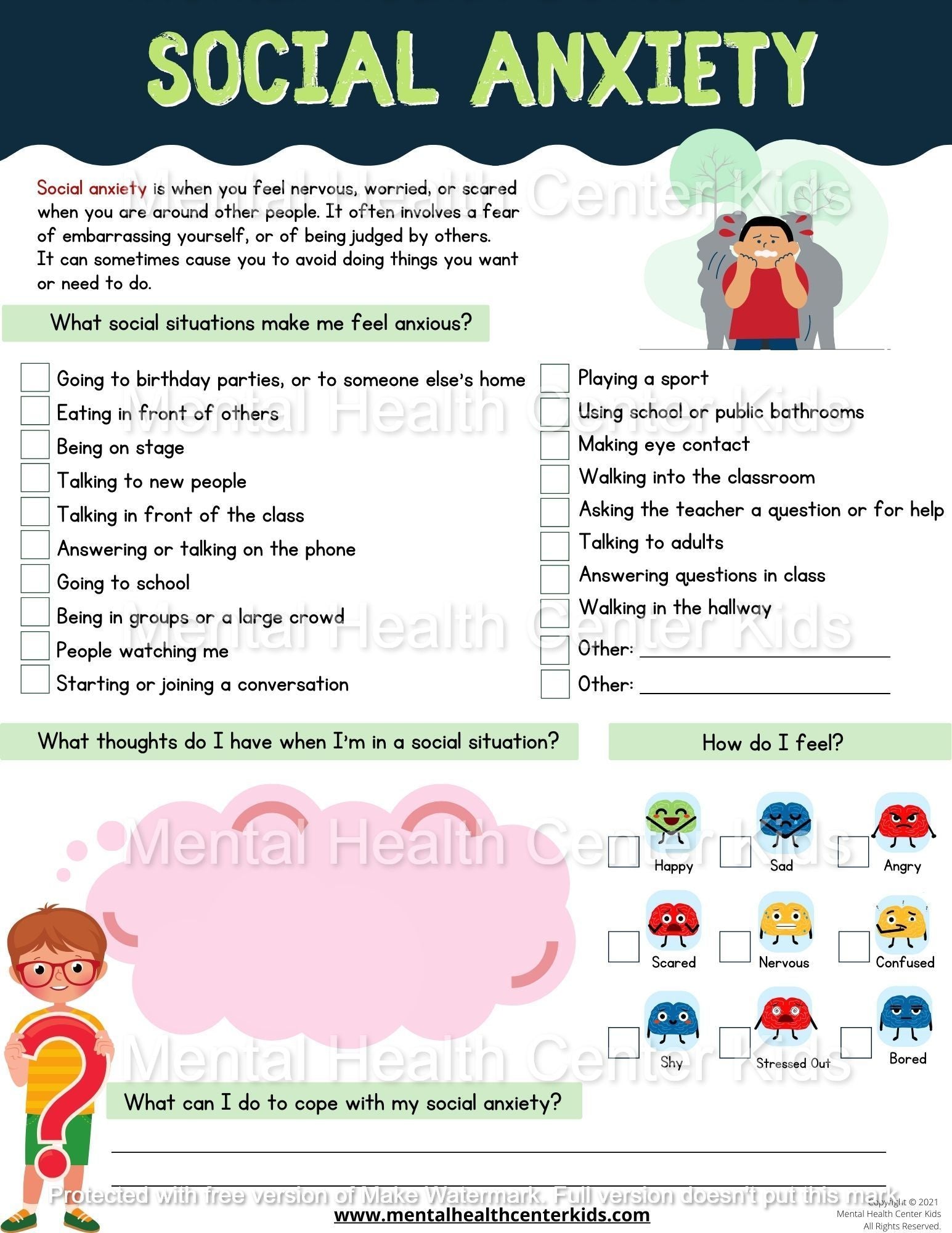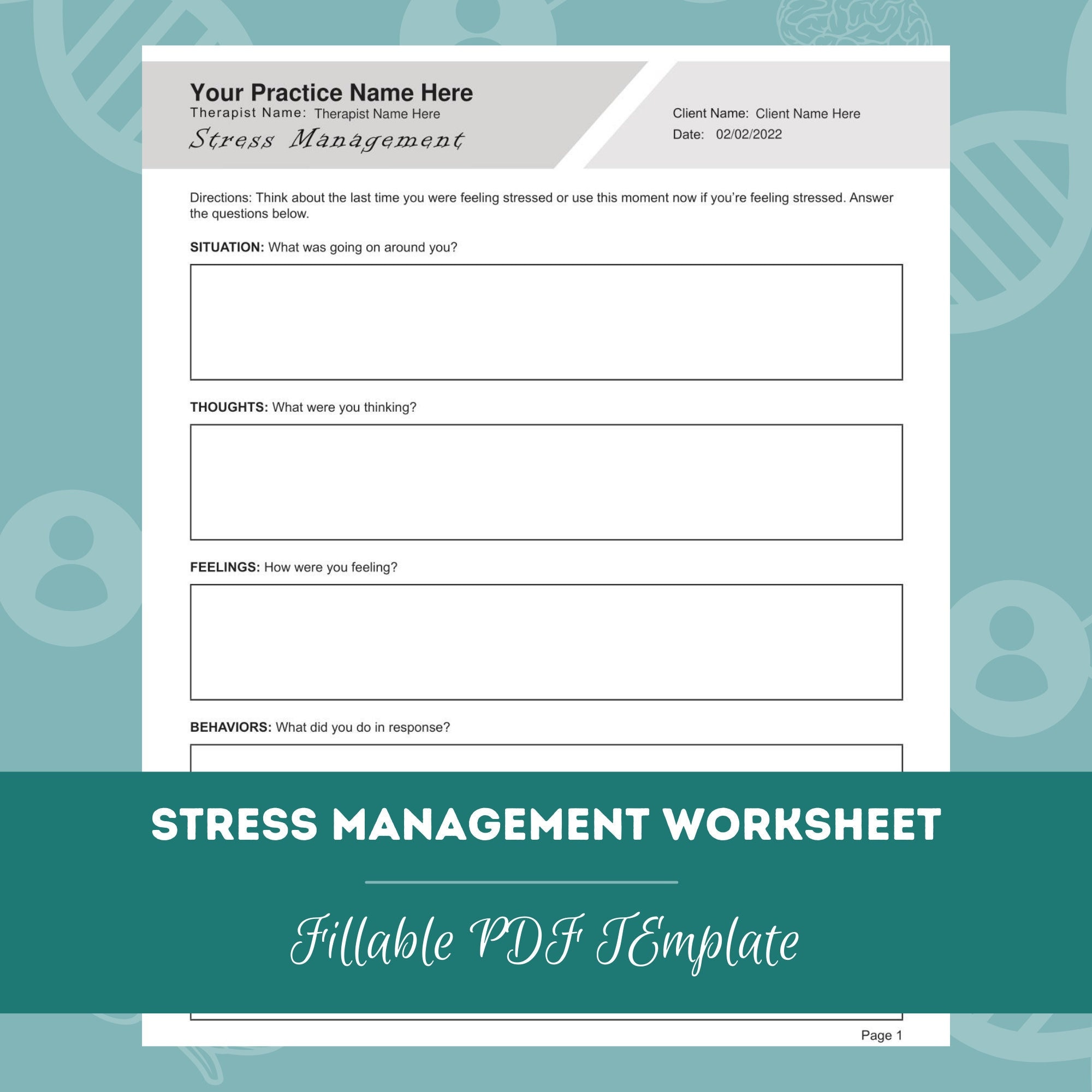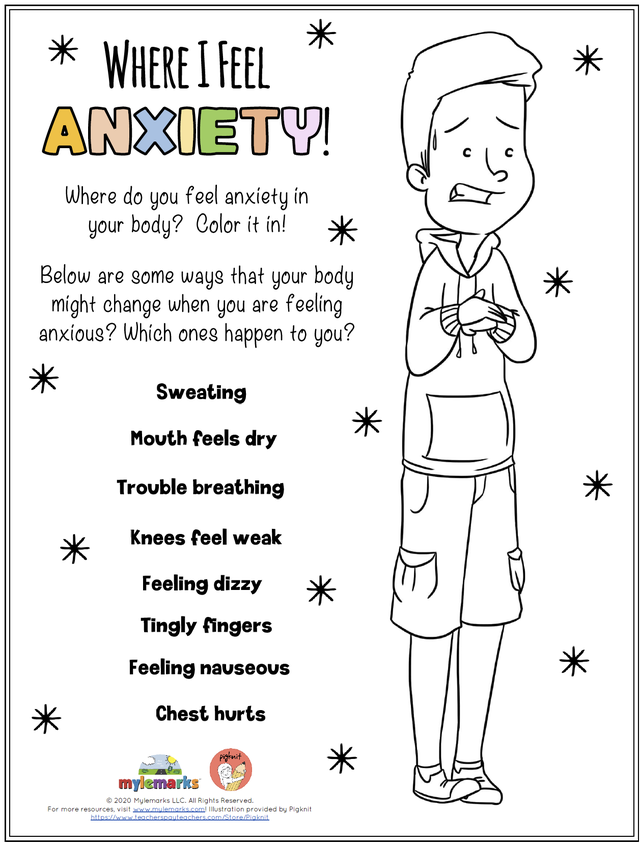
Unlocking Inner Calm: A Comprehensive Guide to Stress Worksheets
In the relentless pace of modern life, stress has become an unwelcome but ubiquitous companion. From demanding jobs and financial pressures to personal relationships and global uncertainties, the triggers for stress are endless. While some level of stress is natural and even beneficial – helping us focus and perform under pressure – chronic or unmanaged stress can wreak havoc on our physical and mental well-being, leading to burnout, anxiety, depression, and a host of physical ailments. The good news is that we are not powerless against its tide. One incredibly effective, accessible, and empowering tool in the arsenal against stress is the use of stress worksheets.
These structured, guided exercises offer a powerful pathway to self-awareness, emotional regulation, and the development of robust coping mechanisms. This article will delve deep into what stress worksheets are, their profound benefits, common types, how to use them effectively, and tips for maximizing their impact on your journey to greater peace and resilience.

What Are Stress Worksheets?

At its core, a stress worksheet is a structured document, either digital or printable, designed to guide an individual through a process of reflection, analysis, and planning related to their stress experiences. They are not simply blank pages for journaling, though journaling can be a component. Instead, they feature specific prompts, questions, charts, or exercises carefully crafted to help users identify stressors, understand their emotional and physical responses, challenge negative thought patterns, and brainstorm effective coping strategies.

Think of them as a personal coach in written form, prompting you to engage with your internal landscape in a systematic and non-judgmental way. They can range from simple checklists to complex cognitive behavioral therapy (CBT) inspired templates, but their ultimate goal remains consistent: to provide a tangible framework for understanding and managing stress.

The Profound Benefits of Utilizing Stress Worksheets

The widespread adoption of stress worksheets by therapists, coaches, and individuals alike is a testament to their efficacy. Their benefits are multi-faceted and can significantly transform how one perceives and responds to stressful situations:
-
Enhanced Self-Awareness: This is perhaps the most fundamental benefit. Many of us react to stress without fully understanding its roots or our typical responses. Worksheets provide a dedicated space to pinpoint specific triggers (people, situations, thoughts), recognize the early warning signs (physical sensations, emotional shifts), and observe patterns in our stress responses. This awareness is the first crucial step towards proactive management.
-
Emotional Processing and Regulation: Stress often manifests as a chaotic storm of emotions – anger, fear, sadness, frustration. Worksheets encourage individuals to name and explore these emotions rather than suppressing them. By externalizing feelings onto paper, they become less overwhelming and more manageable. This process fosters emotional regulation, allowing for a more measured and thoughtful response instead of an impulsive reaction.

-

Challenging Negative Thought Patterns: A significant component of stress often lies in our cognitive interpretations of events. Worksheets, particularly those based on CBT principles, guide users to identify distorted or unhelpful thoughts (e.g., catastrophizing, all-or-nothing thinking). They then prompt the individual to reframe these thoughts into more balanced, realistic, and constructive perspectives, thereby reducing the emotional intensity of the stressor.
-
Development of Coping Strategies: Knowing you’re stressed is one thing; knowing what to do about it is another. Worksheets often include sections dedicated to brainstorming and evaluating various coping mechanisms. This proactive approach helps individuals build a personalized toolkit of strategies – from mindfulness and deep breathing to problem-solving techniques and seeking social support – that they can deploy when stress arises.
-
Setting Achievable Goals and Action Plans: Overwhelm is a common byproduct of stress. Worksheets can help break down large, daunting problems into smaller, manageable steps. By outlining specific actions, setting realistic timelines, and even anticipating potential obstacles, these tools transform vague anxieties into concrete, actionable plans, fostering a sense of control and accomplishment.
-
Tracking Progress and Celebrating Successes: Consistent use of stress worksheets creates a tangible record of your journey. By periodically reviewing past entries, you can observe patterns of improvement, identify strategies that work best for you, and recognize how far you’ve come. This visual representation of progress can be incredibly motivating and reinforcing, encouraging continued self-care and resilience building.
-
Accessibility and Confidentiality: Unlike therapy sessions which require appointments and may involve costs, many stress worksheets are freely available online or as part of self-help books. They can be completed in the privacy of your own home, at your own pace, offering a confidential space for introspection without judgment.


Common Types of Stress Worksheets
The landscape of stress worksheets is diverse, catering to different aspects of stress management. Here are some popular categories:
-
Stress Trigger Identification Worksheets: These prompts ask you to list situations, people, or thoughts that typically induce stress. They might include columns for intensity levels or physical reactions, helping you map out your personal stress landscape.
- Example Prompt: "List 3 recent situations that caused you stress. For each, identify the specific trigger and your immediate emotional/physical reaction."
-
Stress Response Worksheets: Focusing on how stress manifests, these worksheets help you identify your unique physical (e.g., headaches, muscle tension), emotional (e.g., irritability, sadness), and behavioral (e.g., procrastination, withdrawal) responses to stress.
- Example Prompt: "When you feel stressed, what are 3 physical sensations you notice? What are 3 emotions you experience? What are 3 behaviors you tend to engage in?"
-
Cognitive Restructuring Worksheets (CBT-based): These are designed to challenge negative or irrational thoughts. They often involve a sequence: identifying the stressful situation, noting the automatic negative thought, identifying the emotion and its intensity, then challenging the thought with evidence for and against it, and finally, generating a more balanced and realistic thought.
- Example Prompt: "Situation: My boss gave me critical feedback. Automatic Thought: I’m terrible at my job, I’m going to get fired. Emotion: Anxiety (9/10). Evidence for: None. Evidence against: I usually get positive feedback, this was specific, not general. More Balanced Thought: This is an opportunity to learn and improve."
-
Coping Skills Inventory Worksheets: These lists present a range of coping mechanisms (e.g., exercise, mindfulness, talking to a friend, deep breathing) and ask you to rate their effectiveness or identify which ones you currently use and which you’d like to try.
- Example Prompt: "Check off coping strategies you’ve tried. For each, rate its effectiveness (1-5). List 3 new strategies you’d like to explore."
-
Gratitude Journals/Worksheets: While not directly about stress, focusing on gratitude can significantly shift perspective and reduce stress levels. These worksheets prompt you to list things you are grateful for, helping to reframe your mindset towards positivity.
- Example Prompt: "List 3 things you are grateful for today, no matter how small."
-
Action Planning/Problem-Solving Worksheets: For specific stressors that require action, these worksheets guide you through defining the problem, brainstorming solutions, evaluating pros and cons, and creating a step-by-step action plan.
- Example Prompt: "Problem: Overwhelmed by a large project. Brainstorm Solutions: Break it into smaller tasks, delegate, ask for help, set mini-deadlines. Action Plan: Meet with supervisor, divide tasks by week, block out specific work times."
-
Mindfulness and Breathing Exercise Worksheets: These often provide simple instructions for mindfulness meditations or guided breathing exercises, sometimes with prompts for reflection afterward on how the exercise impacted your state.
How to Effectively Use Stress Worksheets
Simply downloading a worksheet isn’t enough; consistent and thoughtful engagement is key to unlocking its benefits.
-
Choose the Right Worksheet: Don’t try to do everything at once. Identify your most pressing need (e.g., identifying triggers, challenging thoughts) and select a worksheet that addresses it. Many online resources offer free downloadable stress worksheets.
-
Find a Quiet, Dedicated Space: Minimize distractions. This is your time for introspection. Put your phone away, find a comfortable spot, and allow yourself to focus fully.
-
Be Honest and Open: The worksheets are for your benefit. There’s no right or wrong answer, and no one is judging you. Be as truthful as possible about your feelings, thoughts, and experiences. The more authentic you are, the more valuable the insights you’ll gain.
-
Don’t Rush: Take your time with each prompt. If a question makes you uncomfortable, pause, breathe, and reflect. Sometimes the most challenging questions yield the most profound insights.
-
Regular Practice: Consistency is more important than intensity. A few minutes daily or weekly dedicated to a worksheet can be far more beneficial than a single, long session. Make it a part of your self-care routine.
-
Review and Reflect: After completing a worksheet, don’t just put it away. Take a moment to read through your answers. What did you learn? Did anything surprise you? How do you feel now compared to before? This meta-cognition solidifies the learning.
-
Combine with Other Strategies: Stress worksheets are powerful tools, but they are most effective when integrated into a broader stress management strategy that might include exercise, healthy eating, sufficient sleep, social connection, and professional therapy if needed.
Tips for Maximizing the Benefits of Stress Worksheets
- Start Small: If you’re new to self-reflection, begin with simpler worksheets like trigger identification or gratitude exercises.
- Personalize Your Experience: Feel free to adapt prompts or add your own notes. If you prefer drawing to writing, incorporate that.
- Track Your Progress Visually: Consider keeping your completed worksheets in a dedicated binder or folder. Seeing the stack grow can be a powerful motivator and a record of your journey.
- Don’t Self-Judge: The purpose of these worksheets is self-discovery, not self-criticism. If you find yourself judging your thoughts or feelings, gently remind yourself that all emotions are valid.
- Celebrate Small Wins: Acknowledge when you successfully use a coping strategy or identify a new trigger. Every step forward is progress.
- Seek Professional Guidance When Needed: While stress worksheets are incredibly helpful for self-management, they are not a substitute for professional mental health support. If your stress feels overwhelming, debilitating, or chronic, consult with a therapist or counselor.
Conclusion
Stress is an undeniable part of the human experience, but its power over us is not absolute. Stress worksheets offer a structured, accessible, and empowering pathway to understand, manage, and ultimately reduce its detrimental effects. By fostering self-awareness, promoting emotional regulation, challenging unhelpful thought patterns, and encouraging proactive coping, these simple yet profound tools equip individuals with the resilience needed to navigate life’s challenges with greater calm and control.
Embracing the regular use of stress worksheets is an investment in your mental and emotional well-being. It’s a commitment to understanding your inner world, developing robust coping mechanisms, and building a life characterized not by the absence of stress, but by the presence of effective strategies to manage it. Take the first step today; your calmer, more resilient self awaits.
